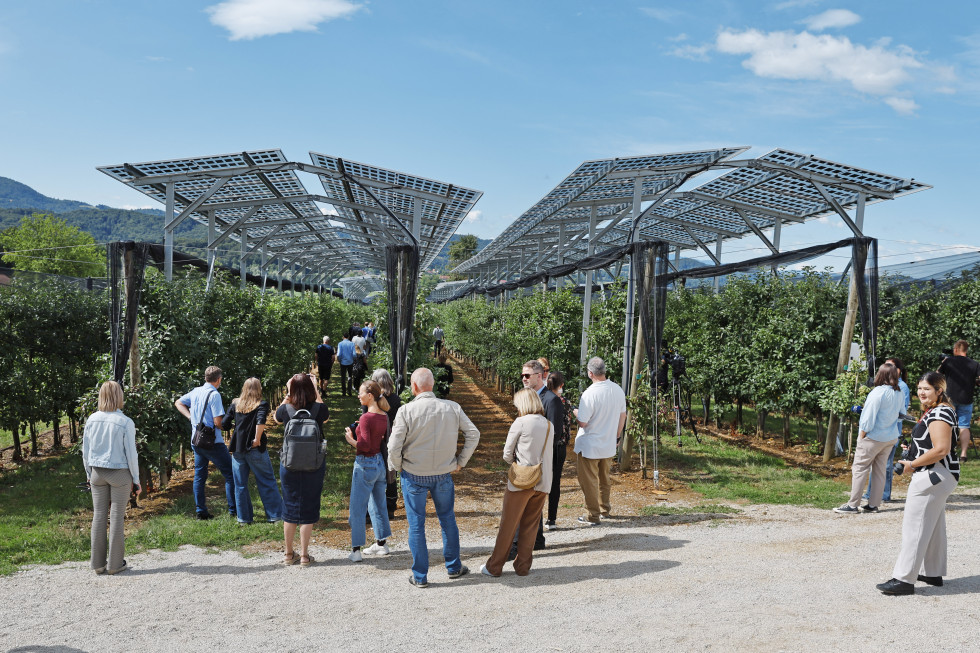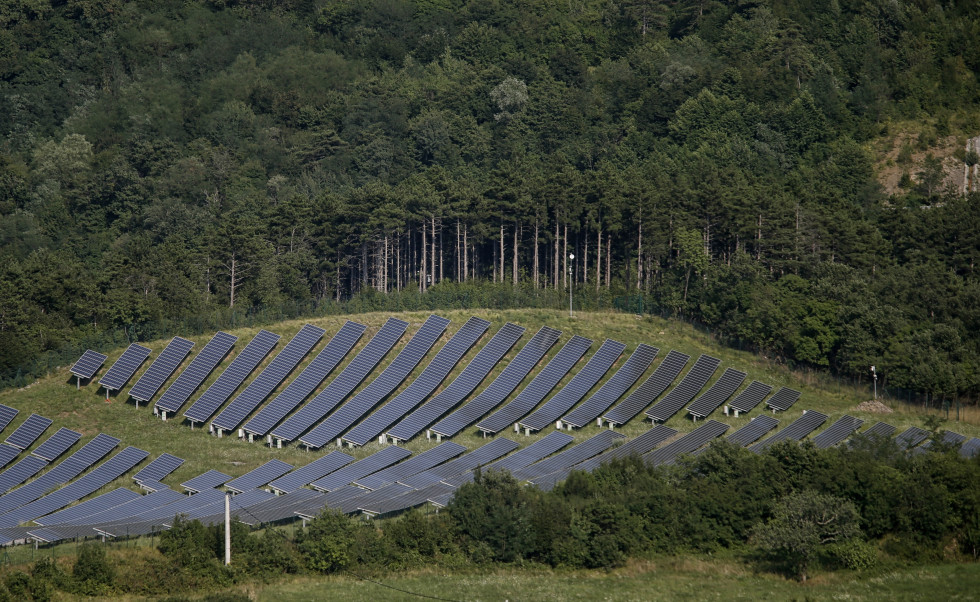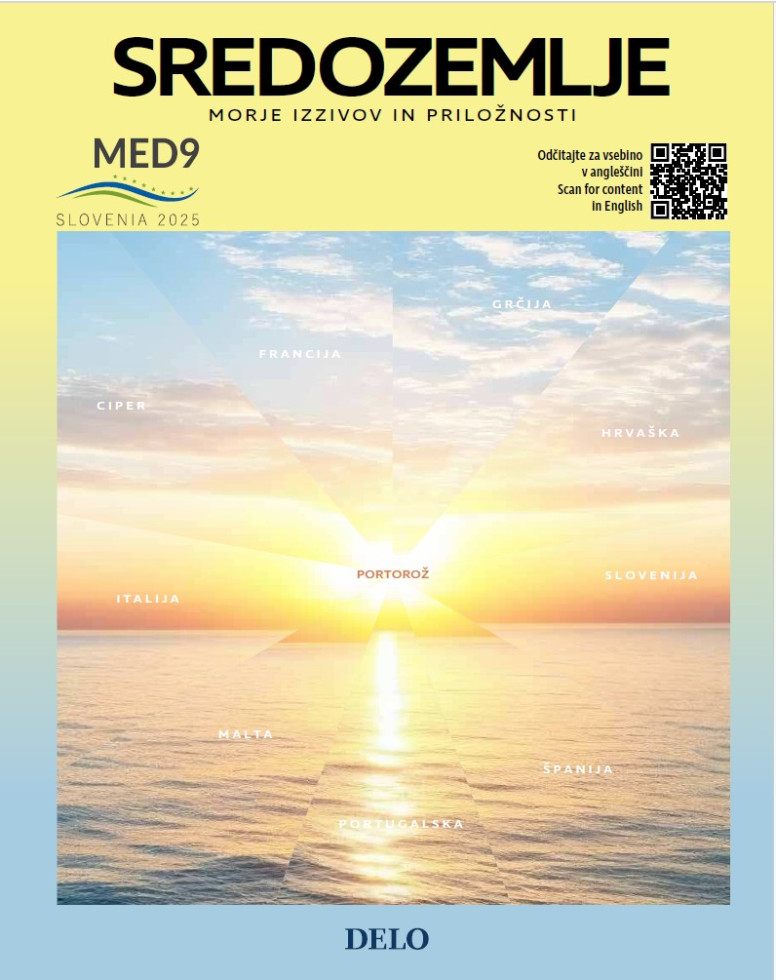More renewable sources, more risk for conventional systems
In the updated National Energy and Climate Plan (NECP), Slovenia increased its ambitions concerning renewable energy sources and emission reductions: the new target is to reduce them by 55% by 2033. The Minister of the Environment, Climate and Energy, Bojan Kumer, highlighted that last year Slovenia was among the top three EU countries in terms of emission reductions and for the first time achieved the one-quarter share of renewable sources in final energy consumption, with hydroelectric power plants still taking the lead role. As a result, this share did not need to be supplemented with purchases from other countries.
This year, the Ministry of the Environment, Spatial Planning and Energy published a new call for proposals to co-fund the construction of new large installations for the generation of electricity from solar or wind energy for the 2025–2029 period, financed under the EU Cohesion Policy Programme. A total of EUR 64.5 million in grants will be available in three phases for solar farms with a rated power of more than 1 megawatt (MW) for large enterprises, and of more than 6 MW for medium-sized, small and micro enterprises and RES communities, and for wind farms with a rated power of more than 1 MW for large and medium-sized enterprises and of more than 18 MW for small and micro enterprises and RES communities.
The purpose of high incentives is to replace investors’ profits based on net measurement. The share of all solar farms is set to increase further. This poses challenges for conventional networks, which were designed to transmit electricity from large power plants to the distribution network and from there to individual consumers. All standards, as well as the training programmes, have been prepared for this system. With new self-supply power plants connected to the distribution network, the situation is becoming quite complicated.
The system’s stability or operational safety is also an issue, partly connected to network surges. "The fact is that the Slovenian power system is already experiencing challenges in maintaining the appropriate voltage due to the changed conditions," indicated Gen-I in their comments to the new network charge act.
Increased voltage also caused the blackout in Spain and Portugal. A different kind of failure happened on the connection line between Montenegro and Croatian Dalmatia. And last year, the European system nearly collapsed due to low electricity production in Germany. The new conditions will therefore require adaptation – at least until the planned commissioning of Slovenia’s second nuclear power plant, if the decision is positive. The initiative for the national spatial plan is in public discussion. The equipment supplier is expected to be selected in 2027 and the final investment decision adopted in 2028.
A cloudy day is a nightmare for the system
On a variably cloudy day, it is difficult to predict the output of solar farms. Deviations in a 15-minute interval can exceed 100 MWh. "In order to balance the system, Eles was forced to activate all types of system services, including tertiary reserves. Furthermore, there are network surges on both the low-voltage level, among household self-consumption users, and at the high-voltage level, at the output from the Krško Nuclear Power Plant outlet," said Gen-I. Voltage fluctuated between 205 and 245 volts for household self-consumption users and between 415 and 425 for the Krško Nuclear Power Plant.
"On days like these, surges clearly occur across very different voltage levels. The power plant is shut down for household self-consumption users, while for the Krško Nuclear Power Plant, voltage levels over 420 kV pose an increased risk of shutdown, which would mean a potential unmanageable transient phenomenon and a serious threat to reliable power supply," Gen-I warned. Action must therefore be taken. According to Gen-I, the stability of the power system or voltage can be improved with demand response or flexible sources. Network tariffs should encourage consumption during peak production from RES when flexibility is ensured, with the help of power storage or electric vehicle charging.
A recent German study by consulting company Agora Energiewende, referenced in the European Commission’s guidelines, shows that dynamic tariffs – namely dynamic electrical energy tariffs standardised with dynamic network tariffs – can be very effective in activating the flexibility of household consumption. According to its findings, there is potential for redirecting more than 100 TWh worth of consumption.
The study also showed that reducing the load on the low-voltage network can also reduce the need for its expansion, cutting additional network expansion costs for the purpose of integrating flexible consumption (battery storage systems, electric vehicles, heat pumps) by nearly half. Moreover, reduced network expenses can benefit all electrical energy users, particularly those contributing to the system integration.
Climate-resilient infrastructure
The Mediterranean region is very vulnerable in some ways; the forecasted consequences of climate change will be devastating, with 250 million people at risk, particularly due to water shortage and the resulting food shortage, in only 10–15 years. This means that the energy sector must be decarbonised, but no country can do this alone, especially with all the expenses arising, from the Covid-19 pandemic to the energy crisis and most recently defence spending. The number of major natural disasters is also increasing. The consequences of floods that struck Slovenia two years ago are still being remedied.
Less than one year after the launch of one of Croatia’s largest green energy investments in Croatia, a strong bora wind ravaged a solar farm on the site of abandoned lye pools of the former alumina factory near Obrovac. The wind destroyed nearly half of the solar farm, revealing deficiencies in the planning and siting of facilities in windy areas. The wind was so strong that the 30-kilogram panels were flying over the state road between Zaton Obrovački and Maslenica. Luckily the road was closed for traffic at the time, preventing a potential tragedy.
Countries in the Mediterranean region differ greatly among each other; while these differences once led to conflicts, they now provide a broader pool of solutions. But several of these countries are at the far ends of major electricity connections, which tend to fluctuate the most. Luckily Slovenia is in the middle, which means that its fluctuations are less pronounced, but it does experience issues related to weak power originating from the south. According to some data, the Sincro.grid project is no longer sufficient to mitigate these effects. However, Eles still ensures system reserves in cooperation with the two system operators in Croatia and Bosnia and Herzegovina.
Nevertheless, one of the things that remains unchanged is that the EU has limited fossil fuel reserves but great potential for harnessing solar and wind energy. That is why it is reasonable to carry out the transition into low-carbon energy, as it is the only way to reduce energy prices and increase safety. But this will require strengthening connections between countries. Slovenia can serve as a good example, as it is covered by a much bigger electricity grid than it requires.





